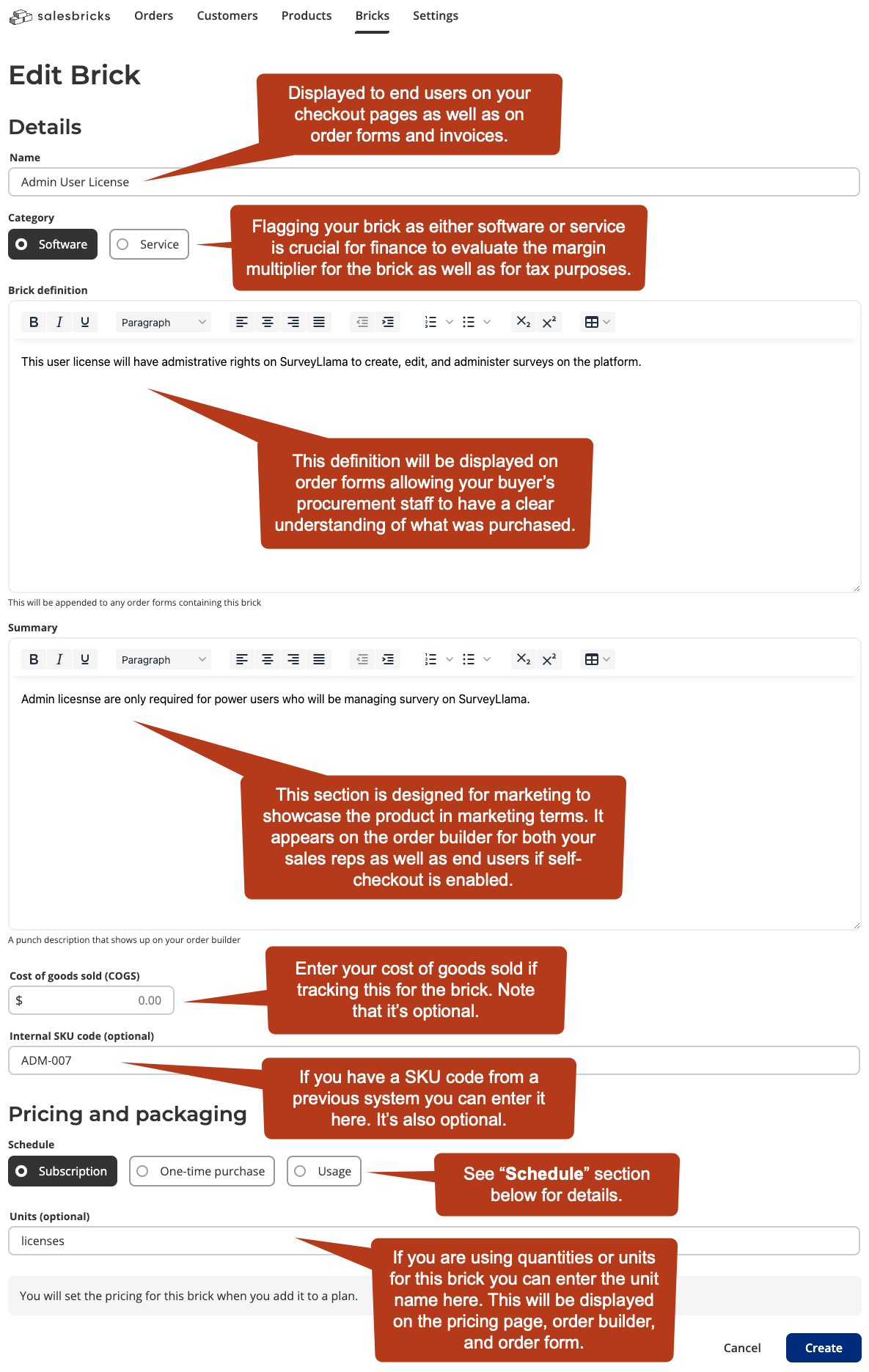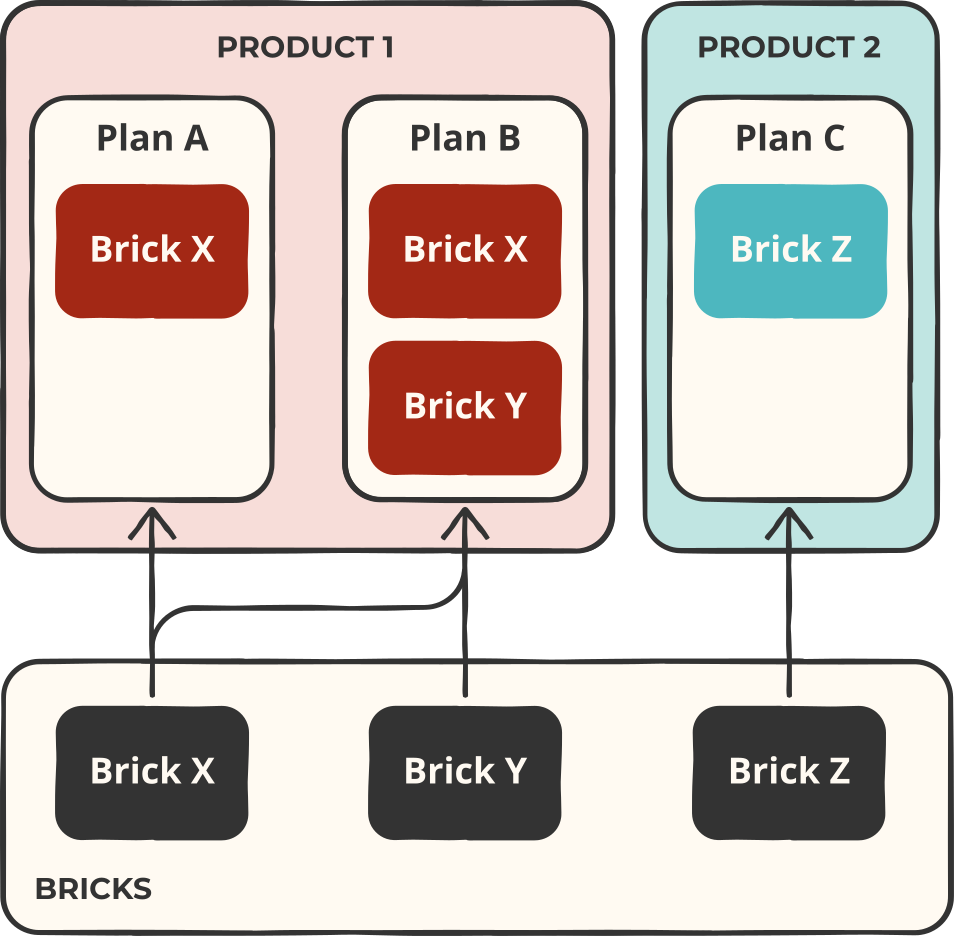Forming your Bricks
What is a brick?
![]() "She's a brick... house"
"She's a brick... house" ![]() That song will be stuck in your head the rest of the day - you're welcome.
That song will be stuck in your head the rest of the day - you're welcome.
Bricks are a crucial part of your pricing and packaging structure. They are the lowest level data point within a SaaS transaction where pricing is assigned.
You can think of a brick as a line-time SKU on your transaction. When checking out at say, Costco, your receipt will have several lines (especially if you're like me and can't stop grabbing things you don't really need off the shelves). Each line-item (cheese, Traeger grill, remote-controlled heated socks etc.) represents a SKU (stock keeping unit). Just as the name denotes, these are items that you are interested in keeping track of in your SaaS inventory.
To create a brick go to bricks in the menu and New brick

From there fill out your brick details

Schedule
Subscriptions, one-time, and schedules usage oh my!!! Use the guidance below to which pricing schedule to select. Make sure to get it right the first time as this cannot be edited after your brick is saved (more on that in a minute).
Subscription: Use the subscription payment schedule type anytime your customers are agreeing to make a payment in advance of receiving ongoing access to the brick. For example, you may set up your schedule so that users agree to pay for a license to your platform for 12 months.
One-time Purchase One-time purchase schedules are used for on-time purchases such as implementation fees or service hours for services outlined in a statement of work.
Usage Usage pricing denotes billing in arrears for software or services consumed, or allowing your clients pay-as-you-go. Note that usage bricks require additional integration for your platform to send usage data to Salesbricks. For usage you will be presenting with two measurement options; final value and prorated.
- Final value: Uses a running counter that tallies up total usage over a billing cycle (generally a month)
- Prorated: Uses a running counter that tallies up usage over a period of time over a billing cycle (generally a month)
Brick pricing options are dependent on the brick schedule
Selecting the correct brick schedule will impact the options available when setting the price on the brick within the plan. For example, if usage is selected you will have the option to input a pay-as-you-go rate which can be in fractional cents (not available for subscription and one-time purchase schedules).
Why is the brick framework is so important?
Just like when building a brick house your bricks need to have structure and a framework. The Salesbricks brick framework restricts SKU proliferation created when an organization creates a new underlying SKU each time that item needs to be sold at a different price point or schedule. A brick can belong to one or many products and plans as depicted below.

Brick pricing is decoupled from from the brick creation process and applied when only when adding a brick to a plan. This enables your company with the flexibility to innovate on pricing structures while still allowing those price variations to be tied back to the brick unit. Without the the brick framework obtaining SKU/brick data for a single brick across all customers and price variations be a herculean effort. With Salesbricks this data is only a few clicks away.

This article was brought to you by Jordan Davis, a renown mason at Salesbricks.
Have questions or need additional support? Shoot me an email at [email protected]
Updated 4 months ago
